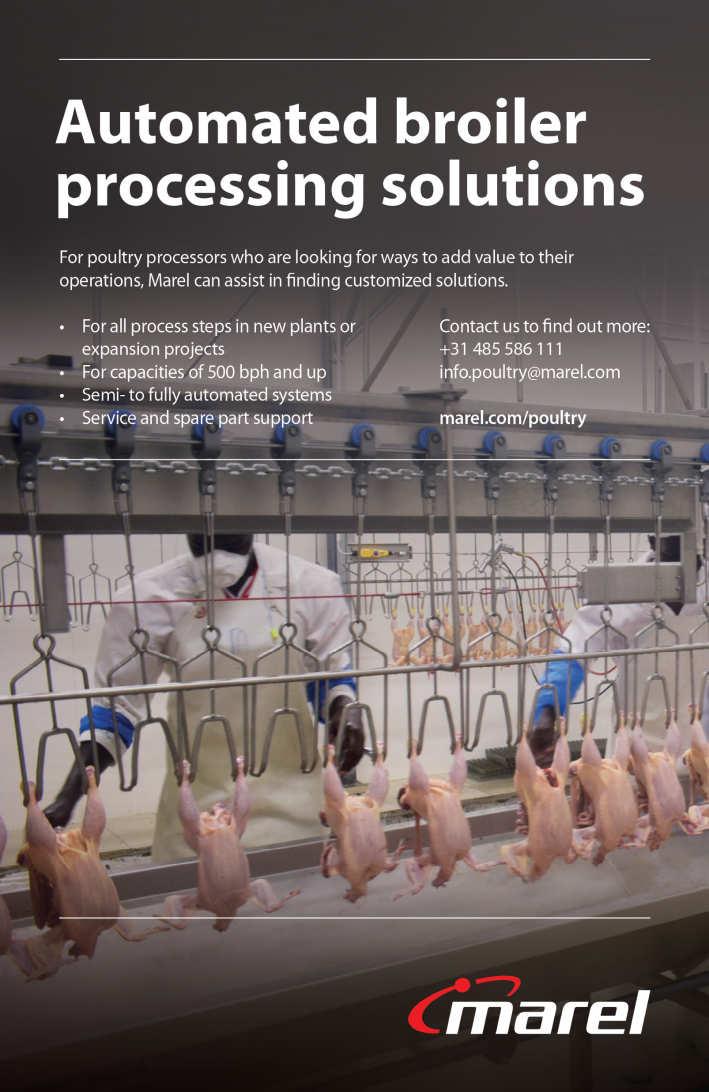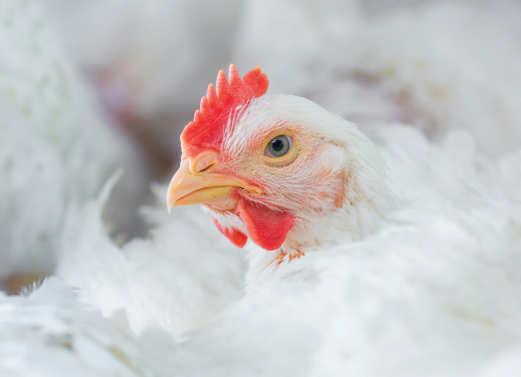
9 minute read
Poultry
A look at some innovations that are bringing new opportunities to the poultry industry.
New frontiers in the defence against poultry diseases
Globally, a strong focus on vaccines and surveillance is evident.
AFRICA’S POULTRY INDUSTRY is set for strong growth over the next decade, according to estimates by the Netherlands-based Rabobank. It says the sector could grow at a compound annual rate of approximately 4.7% from a current valuation of US$25bn, with markets such as South Africa, Nigeria, Algeria, Ethiopia, and Morocco leading the charge.
Globally, the poultry trade faces ongoing challenges like avian diseases, making disease prevention, beginning with biosecurity, fundamental to the success of the industry.
Preventative measures against diseases include vaccination, parasite control, identifying and treating sick birds, separating multi-age flocks and practising routine biosecurity procedures between flocks and staff working with them.
Globally, a strong focus on vaccines and surveillance is evident, especially due to the far reaching effects of the pandemic.
We take a look at some advancements that are enabling disease prevention and monitoring.
VIV Europe 2022, an event focused on ‘feed to food’ industry, which was held from 31 May to 2 June, hosted some innovations for safe and effective in-ovo vaccination and nutrition such as Royal Pas Reform’s new technology SmartVac, disease control programmes and effective broiler house cleaning and disinfection.
Controlling, reducing, eradicating and receiving accreditation
Royal GD’s VIR-check is its latest innovation for assessing the effectiveness of broiler house cleaning and disinfection.

for specific viruses is the ultimate goal of any farmer involved in disease control. Royal GD, a leading organisation in animal health and animal production, makes it possible with its disease control programme, including its latest innovation VIR-check. It is the best test for assessing the effectiveness of broiler house cleaning and disinfection. This test determines the viral pressure in a broiler house. Based on 10 swabs from six- to seven-day old chicks, a quantitative multiplex PCR test assesses how many common resistant intestinal viruses the chicks picked up in the first days of life. The VIR-check score is easy to interpret with four colour coded categories (green, yellow, orange and red). This tool shows the result of farm hygiene and disinfection and stimulates to continuously improve this process. Research shows that chicks with a lower VIR-check score grow faster. If a farm improves from category red to category green, this will result in more than 100 grams of extra growth per chick in six weeks.
New protection against E. coli
Zoetis helps ensure breeder flocks are effectively supplying broiler hatcheries through a comprehensive portfolio of vaccines and services designed to reduce disease threats.
Over the past ten years Poulvac E. coli has become routinely used throughout the egg laying sector and has proved particularly helpful in protecting valuable breeding stock.
For laying and breeding pullets it was not allowed to be used in birds in lay or within six weeks before the onset of the laying period. This limitation has now been removed and replaced with an in-lay safety claim, allowing the vaccine to be used throughout lay.
The new opportunity to extend protection against E. coli infection for egg layers and breeding stock is seen as a significant advance for the poultry industry.
“The stated duration of immunity is 12 weeks, and many flock owners choose to vaccinate multiple times during the rearing period to maximum protection levels,” said John Kenyon, Zoetis UK national veterinary manager, as reported in The Poultry Site.
“This new approval gives them much greater flexibility in protecting their birds. The timing of vaccination in rearing can now be adjusted to include use in the six weeks before start of lay with the opportunity for further use during the laying period which is now often extended from 72 to 80 weeks or even longer.”
He said extending the protection could be particularly beneficial where there had been E. coli issues in the past and to react to disease occurring in a particular flock that had not responded to medication or other intervention.
Infectious Bursal Disease
The Infectious Bursal Disease (IBD) is associated with significant immunosuppression, increased mortality, and poor economic performance. Vaccines are the best tool to combat infectious bursal disease virus (IBDV), but vaccination needs careful monitoring. The subclinical form of the disease flies under the radar because susceptible chickens younger than two weeks of age don’t show, or hardly show, any clinical signs when they become infected. Prof Sjaak de Wit, a senior researcher with GD Animal Health in the Netherlands, maintains that this “sneaky” form of IBD is a global threat to poultry producers because, if it is not mitigated by a prevention programme, the damage to poultry welfare and productivity cannot be reversed within the normal broiler lifecycle.
Conclusion
The best way to manage diseases in poultry production is to prevent them. Prevention of diseases includes sound biosecurity measures, vaccination, good hygiene and stress management.
New technologies can help the industry solve the numerous challenges and look forward to future opportunities that will enable it to thrive and succeed. h

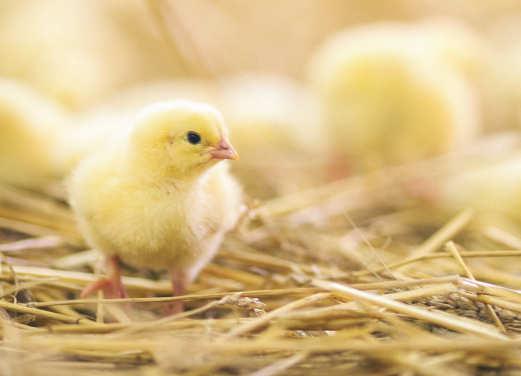
New technologies can help the industry solve numerous challenges.
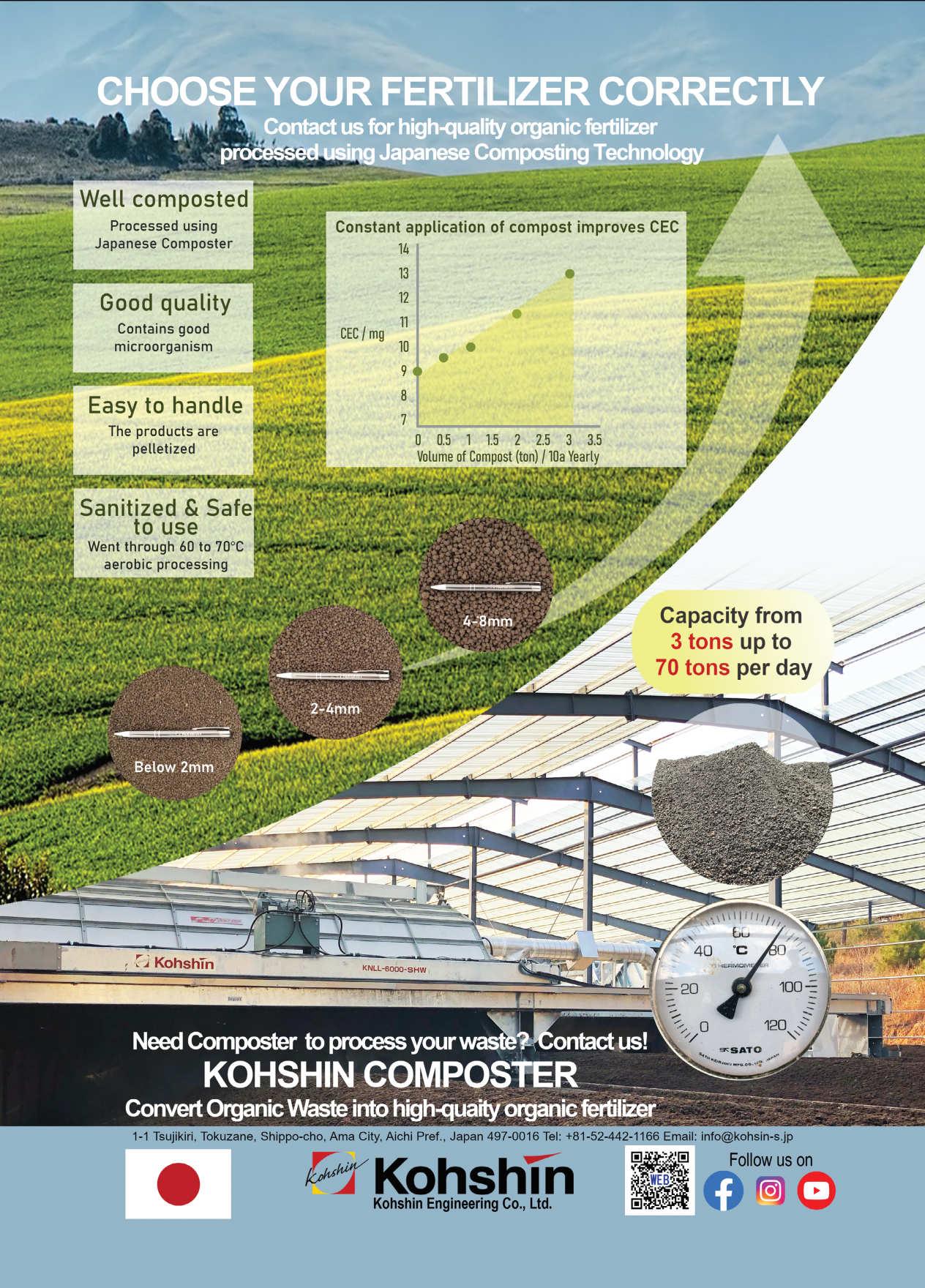
As the poultry industry grapples with an uncertain future, quality processing solutions are proving their value.
Delivering quantity without compromising quality
ACCORDING TO A report by Rabobank, the poultry industry is facing a difficult period following the Russian invasion of Ukraine as rising grain prices put a strain on the sector.
The higher cost of raising livestock is, out of necessity, being pushed onto the consumer, which is having a detrimental effect, especially in developing countries where food expenditure can represent a significant percentage of household spend.
These macroeconomic developments –combined with lower purchasing power post-pandemic – has the potential to lead to regional crisis situations within the industry.
However, the situation is not hopeless, as Rabobank has indicated that global poultry demand and trade will remain strong for the rest of the year with various sources predicting a CAGR growth of 4% in the following years. This could be enhanced further by a focus on efficiency to offset higher costs and supply challenges.
Quality alongside quantity
While efficiency and production growth should of course be targeted, quality cannot be comprised, which is where processing companies such as Marel are investing heavily to lead the way.
Earlier this year, in a demonstration of this commitment, Marel added the IRIS Fillet Inspection (FI) camera to its food quality programme for poultry processors for quality assurance of chicken fillets. Indicating its belief in the unquestionable necessity of quality, Marel’s IRIS FI camera can detect defects such as bruises, fat and skin, providing the option to secure visual quality in addition to deboning systems, trimming stations and bone scanners. IRIS FI can be combined with Innova distribution software and a fillet distribution system to filter out products that don’t meet criteria –enhancing efficiency.
In a recent report showcasing the market demand variations in respect to anatomic and non-anatomic cuts, Marel demonstrated how it has continued to develop innovations to meet all customer requirements presented. For example, in response to South-East Asian processors need for anatomic leg portions (as local consumers prefer dark meat) Marel released the JL/JL-R leg processor after studying how processors produced this portion manually.
The module reproduces the hand movements necessary to ensure maximum removal of the oyster with the anatomic leg and allows for the oyster meat to be harvested – increasing yields obtained through automatic leg deboning systems.
Recognising the need for uniform cut weights for use in the fast-food industry (to ensure similar cooking times), Marel offers the ACM-NT Convenience Food cutupsystem. In the industry, wings are cut with rosette of breast meat attached, breasts are cut into three portions and thighs and drumsticks are not cut between respective joints. The ACM-NT Convenience Food cutupsystem can doe all these cuts automatically and has been approved by the QSR chain.
In many markets, the breast is considered the most valuable part of the chicken and virtually all bone-in breast portions are deboned into a wide variety of breast fillet products. Filleting can be done manually or automatically, the bone-in input material being a front half or breast cap. The Marel ACM-NT cut-up system can produce both and can also cut non-anatomic breast products sold bone-in.
The wide range of solutions which offer both quantity and quality has stapled Marel as one of the most trusted suppliers worldwide and this is reflected in customer feedback.
For all to see
Allison Smith, site director at Cranswick Country Foods Fresh Poultry, who visited Marel’s exhibition stand at VIV Europe 2022 said, “Personally, I take great pride in our facility’s hygiene and cleanliness, therefore I am particularly enthusiastic about Marel’s one-touch solution for breast
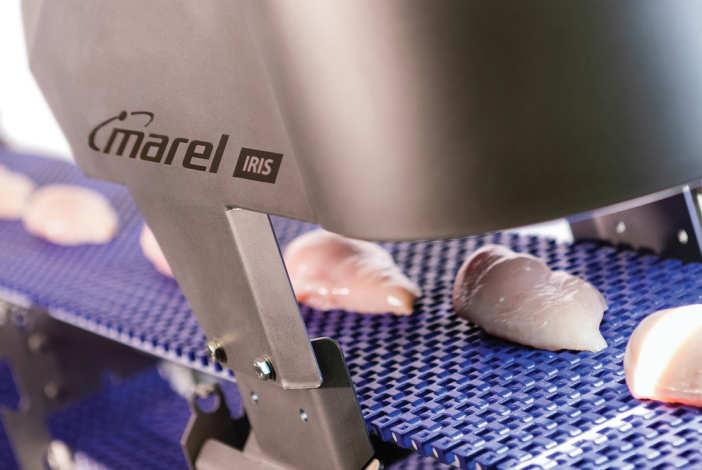
Marel’s IRIS Fillet Inspector camera system visually assesses chicken fillets to meet the requirements of the customers.
Marel’s central theme at this year’s VIV Europe was ‘Connect for success’, pointing out the importance of connectivity in all areas of poultry processing.
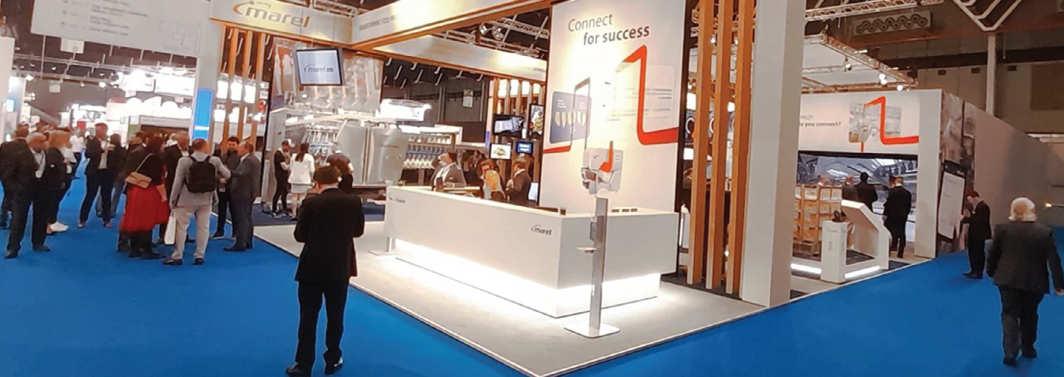
deboning and the downstream processes for automated fillet handling.
“This is an enormous hygienic advantage in many aspects, one of which is being a huge labour-saving solution, up to about 16 people.”
At the stand, Marel received visitors from a diverse range of countries including African contingents from Libya, Tanzania and Cameroon; demonstrating the company’s reach in all kinds of markets.
Marel was, of course, not the only company operating within this space which was on display at VIV Europe. At the booth manned by Meyn, a specialist that has been fully dedicated to poultry processing for many years, visitors could explore the atmospheric terrace and learn about the company’s strategies for delivering efficient and quality solutions.
The company provides knowledge, equipment, systems and services all over the world and relished the chance to reunite with familiar faces at the show in these unsettled. Sales director Robbert Birkhoff, commented, “It feels good to see our international colleagues again; meeting face-to-face is so much more satisfying for our business than all the Zoom meetings from last years. The access to the launch of our in-line dark meat deboning technology was by invitation for industry-specific relationships. It was a pleasure to present our innovation and receive positive responses from our valued customers.”
With the poultry industry facing a potentially promising but challenging future, the importance of reputable providers delivering efficient, quality and hygienic processing solutions cannot be understated. h
